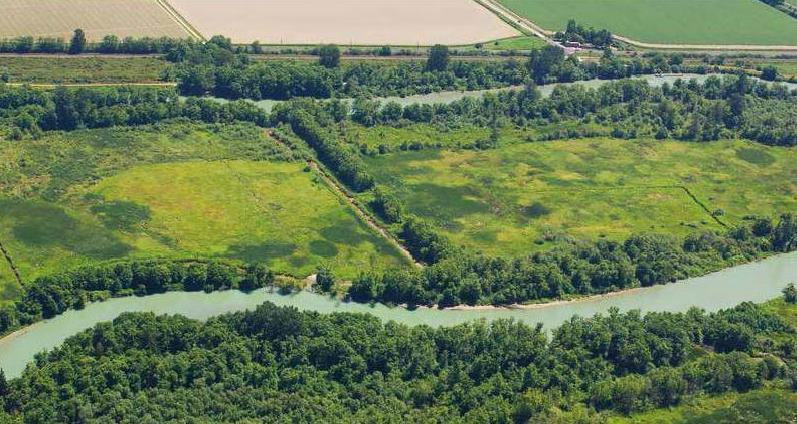
Milltown Island historically was an estuarine wetland and is located in the Skagit tidal delta. Restoration of this island was identified in the federally adopted Skagit Chinook Recovery Plan. Phased restoration began at the 212-acre Milltown Island in 2007 through the use of explosives to breach the dike surrounding the perimeter of the island. The primary purpose of restoration at Milltown is to increase rearing habitat capacity to natural origin juvenile Chinook salmon. Carrying capacity in the Skagit estuary is limiting the Chinook population to recover.
Partnership: Pacific Marine and Estuarine Fish Habitat Partnership
Project (Water to Watch): Milltown Island Estuary Restoration Project – Skagit River (Puget Sound), 48.3131N latitude, -122.3514W longitude
Purpose of the project:
Milltown Island historically was an estuarine wetland and is located in the Skagit tidal delta. Restoration of this island was identified in the federally adopted Skagit Chinook Recovery Plan. Phased restoration began at the 212-acre Milltown Island in 2007 through the use of explosives to breach the dike surrounding the perimeter of the island. The primary purpose of restoration at Milltown is to increase rearing habitat capacity to natural origin juvenile Chinook salmon. Carrying capacity in the Skagit estuary is limiting the Chinook population to recover. The processes restored as a result of the restoration include:
• Natural formation of tidal channels in estuaries.
• Unrestricted movements of saltwater through tidal channels in estuaries.
• Accumulation and retention of organic material from plants and aquatic animals.
• Unrestricted movement and migration of fish and wildlife.
Conditions improved as a result of the restoration:
• Restored tidal freshwater wetlands, which are highly productive habitats that support biodiversity and provide connectivity between the land and sea.
• Restored large river delta that provides valuable nursery habitat for threatened species of juvenile salmon, such as Chinook, increasing their survival and supporting population recovery in Puget Sound.
• Improved quality of water flowing through the estuary.
Human Interest/Community Benefit:
This project was identified in the locally (from groups within the watershed) developed and federally approved Skagit Chinook Recovery Plan. Local groups within the watershed designed and constructed the project with oversight from the Federal Services. There is a great deal of local interest in this and many other projects on the Skagit because of the desire to restore estuaries and wetlands and improve habitat for native fish. Current fish assemblage includes 14 native species: Chinook salmon, coho salmon, chum salmon, pink salmon, cutthroat trout, steelhead trout, mountain whitefish, three spined stickleback, peamouth chub, prickly sculpin, pacific staghorn sculpin, starry flounder, large scale sucker, and surf smelt. Potential fish assemblage may include several additional native fish species (pacific lamprey, shiner perch) and non-native fish species (largemouth bass, pumpkinseed sunfish).
Project Timeline:
Biologists desire to complete a third year of post-restoration monitoring for fish assemblage and complete the last phase of restoration, which is approximately 375’ of dike removal using explosives scheduled for 2014.
Partners:
Staff collaborate with NOAA fisheries for ecology research and monitoring. Restoration feasibility and design is vetted through multi-discipline technical groups within the watershed through Puget Sound’s Chinook Recovery process. These local groups are known as TAGs (Technical Advisory Groups). Once approved locally, and submitted for funding through the State’s Salmon Recovery Funding Board (SRFB), the SRFB technical review panel evaluates each project. Milltown Island Restoration has been through this process for each phase.
